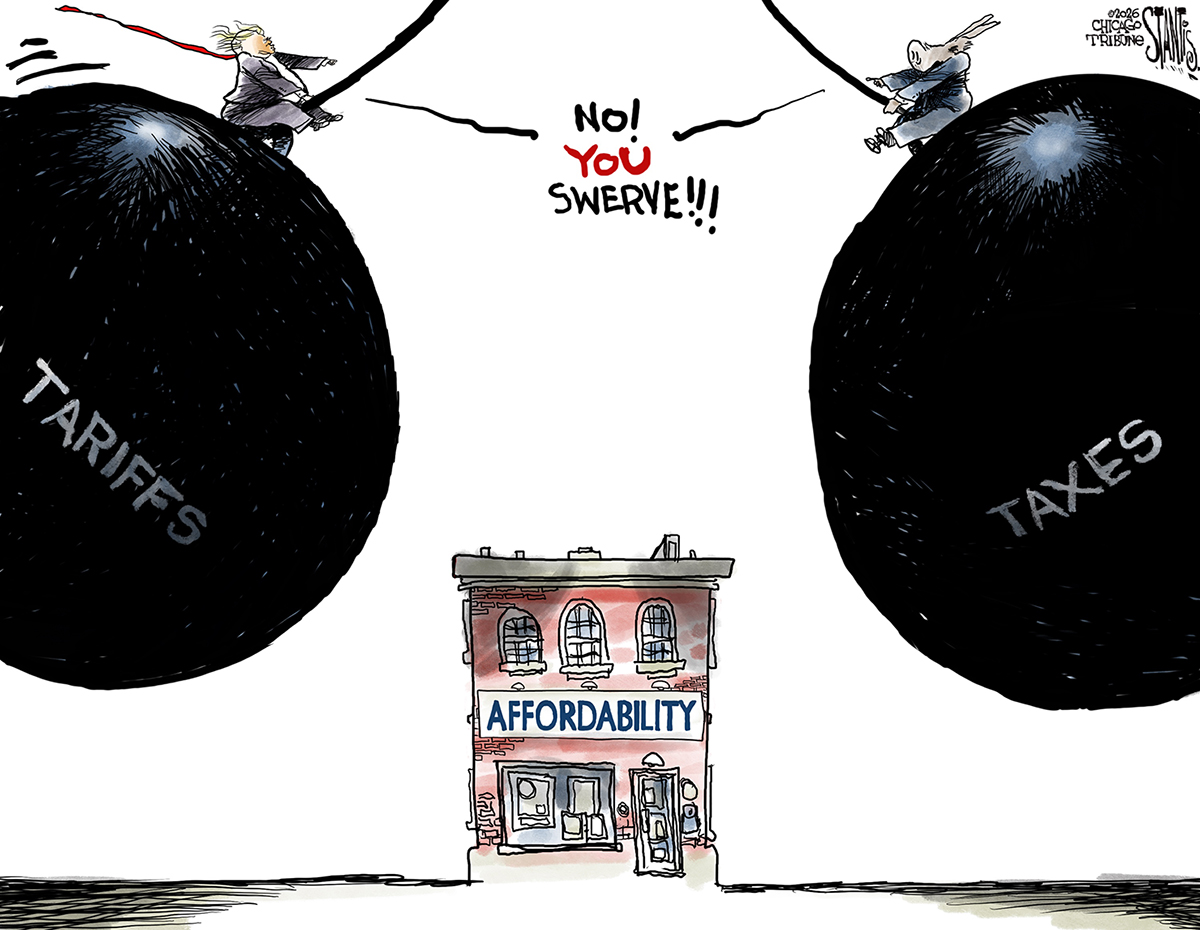Did climate change turn Mars into a dead planet?
Detailed pictures of two sister craters offer proof that the Red Planet may once have been sufficiently moist to support life

New evidence suggests that Mars' dry climate was once wetter and possibly more Earth-like. The European Space Agency (ESA) has released images of two side-by-side craters offering clues to the dusty, barren Red Planet's past. Here's what you should know about the new theory:
What exactly do the photographs depict?
The high-resolution stereo images showcase the Danielson and Kalocsa craters, which sit side by side in a desert-like region called Arabia Terra. Snapped on June 19, 2011, from aboard the Mars Express spacecraft, the photos highlight new topographical evidence that has led experts to posit that the larger crater was once filled with water.
The Week
Escape your echo chamber. Get the facts behind the news, plus analysis from multiple perspectives.

Sign up for The Week's Free Newsletters
From our morning news briefing to a weekly Good News Newsletter, get the best of The Week delivered directly to your inbox.
From our morning news briefing to a weekly Good News Newsletter, get the best of The Week delivered directly to your inbox.
What's the evidence?
In the much bigger, 38-mile-across Danielson crater — named after George E. Danielson, who pioneered many of the cameras used to photograph Mars today — steep, wind-carved hills called "yardangs," characterized by distinct layers of sediment, protrude from the crater's bottom. (See a photo below.) ESA scientists believe the sediment that forms these yardangs was deposited there by strong north-northeasterly winds and then hardened (or cemented) by water, "possibly from an ancient deep groundwater reservoir," says Alan Boyle at MSNBC. In contrast, the more elevated, 20-mile-wide Kalosca crater features a smooth bottom with no such structures jutting out, possibly because it was never deep enough to reach the groundwater.
What happened to the water?
The theory is that slight shifts in the planet's axis triggered drastic climate changes over millions of years, leading to intermittent wet and dry periods. Judging from the yardangs' orientation, researchers believe that the same strong north-northeasterly winds that deposited the original sediments battered them with dust and sand during a dry spell after the water disappeared, carving the yardangs into their characteristic shapes. Similar axis changes are thought to have wrought the extreme ice age cycles here on Earth. Take a look at the yardangs in the Danielson crater:
A free daily email with the biggest news stories of the day – and the best features from TheWeek.com
Sources: Astro Bio, Daily Mail, MSNBC, PhysOrg
-
 Political cartoons for January 18
Political cartoons for January 18Cartoons Sunday’s political cartoons include cost of living, endless supply of greed, and more
-
 Exploring ancient forests on three continents
Exploring ancient forests on three continentsThe Week Recommends Reconnecting with historic nature across the world
-
 How oil tankers have been weaponised
How oil tankers have been weaponisedThe Explainer The seizure of a Russian tanker in the Atlantic last week has drawn attention to the country’s clandestine shipping network